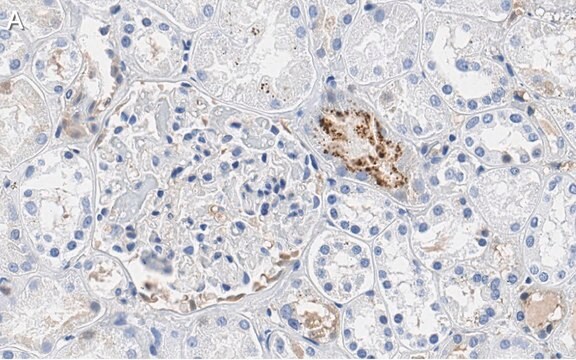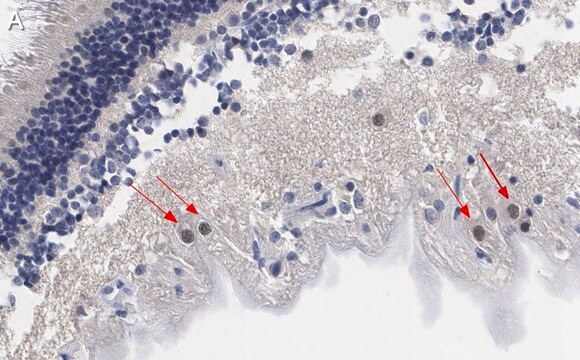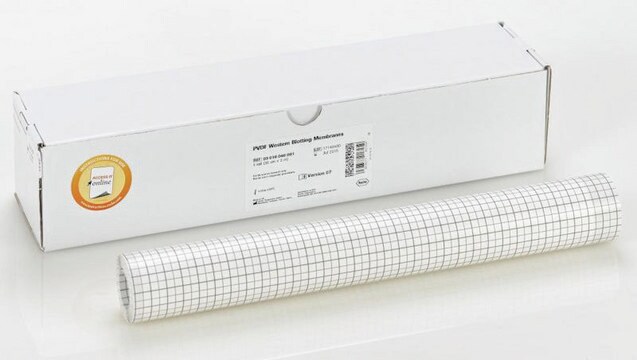MAB1059
Anti-Pigment Epithelium Derived Factor Antibody, clone 10F12.2
clone 10F12.2, Chemicon®, from mouse
Sinónimos:
pigment epithelium-derived factor, proliferation-inducing protein 35, serine (or cysteine) proteinase inhibitor, clade F (alpha-2
antiplasmin, pigment epithelium derived factor), member 1, serpin peptidase inhibitor, clade F (alpha-2 antiplasmin
About This Item
Productos recomendados
biological source
mouse
Quality Level
antibody form
purified immunoglobulin
antibody product type
primary antibodies
clone
10F12.2, monoclonal
species reactivity
human
species reactivity (predicted by homology)
rat
manufacturer/tradename
Chemicon®
technique(s)
ELISA: suitable
immunocytochemistry: suitable
immunohistochemistry: suitable
western blot: suitable
isotype
IgG2a
NCBI accession no.
UniProt accession no.
shipped in
wet ice
target post-translational modification
unmodified
Gene Information
human ... SERPINF1(5176)
General description
Specificity
Immunogen
acids 196-347 of human PEDF tagged with GST on the N-terminal was expressed in E. Coli. GST-PEDF is about 46 kDa on SDS-PAGE.
Application
Neuroscience
Neurochemistry & Neurotrophins
Recognizes a protein with a molecular weight of ~46 kDa when tested against immunogen. Western blot positive control is available (Catalog number AG672)
ELISA:
A previous lot of this antibody was used on ELISA.
Immunocytochemistry:
A previous lot of this antibody was used on Immunocytochemistry.
Immunohistochemistry:
A previous lot of this antibody was used on frozen sections.
Optimal working dilutions must be determined by end user.
Quality
Western Blot Analysis:
1:1000 dilution of this lot detected pigment epithelium on 10 μg of human placenta lysate.
Target description
Physical form
Storage and Stability
Analysis Note
Eye tissue.
Other Notes
Legal Information
Disclaimer
¿No encuentra el producto adecuado?
Pruebe nuestro Herramienta de selección de productos.
Optional
Storage Class
10 - Combustible liquids
wgk_germany
WGK 2
flash_point_f
Not applicable
flash_point_c
Not applicable
Certificados de análisis (COA)
Busque Certificados de análisis (COA) introduciendo el número de lote del producto. Los números de lote se encuentran en la etiqueta del producto después de las palabras «Lot» o «Batch»
¿Ya tiene este producto?
Encuentre la documentación para los productos que ha comprado recientemente en la Biblioteca de documentos.
Nuestro equipo de científicos tiene experiencia en todas las áreas de investigación: Ciencias de la vida, Ciencia de los materiales, Síntesis química, Cromatografía, Analítica y muchas otras.
Póngase en contacto con el Servicio técnico







